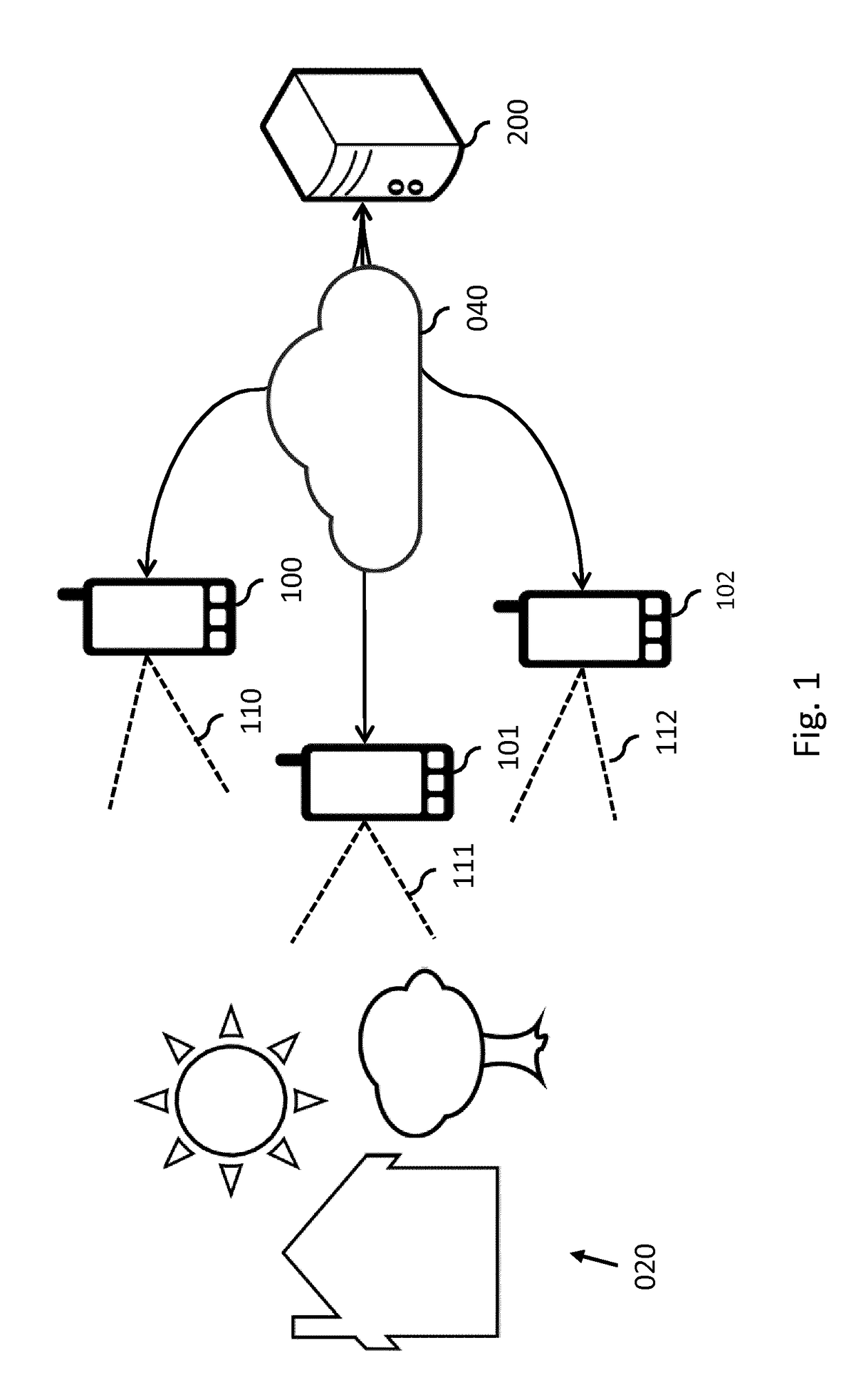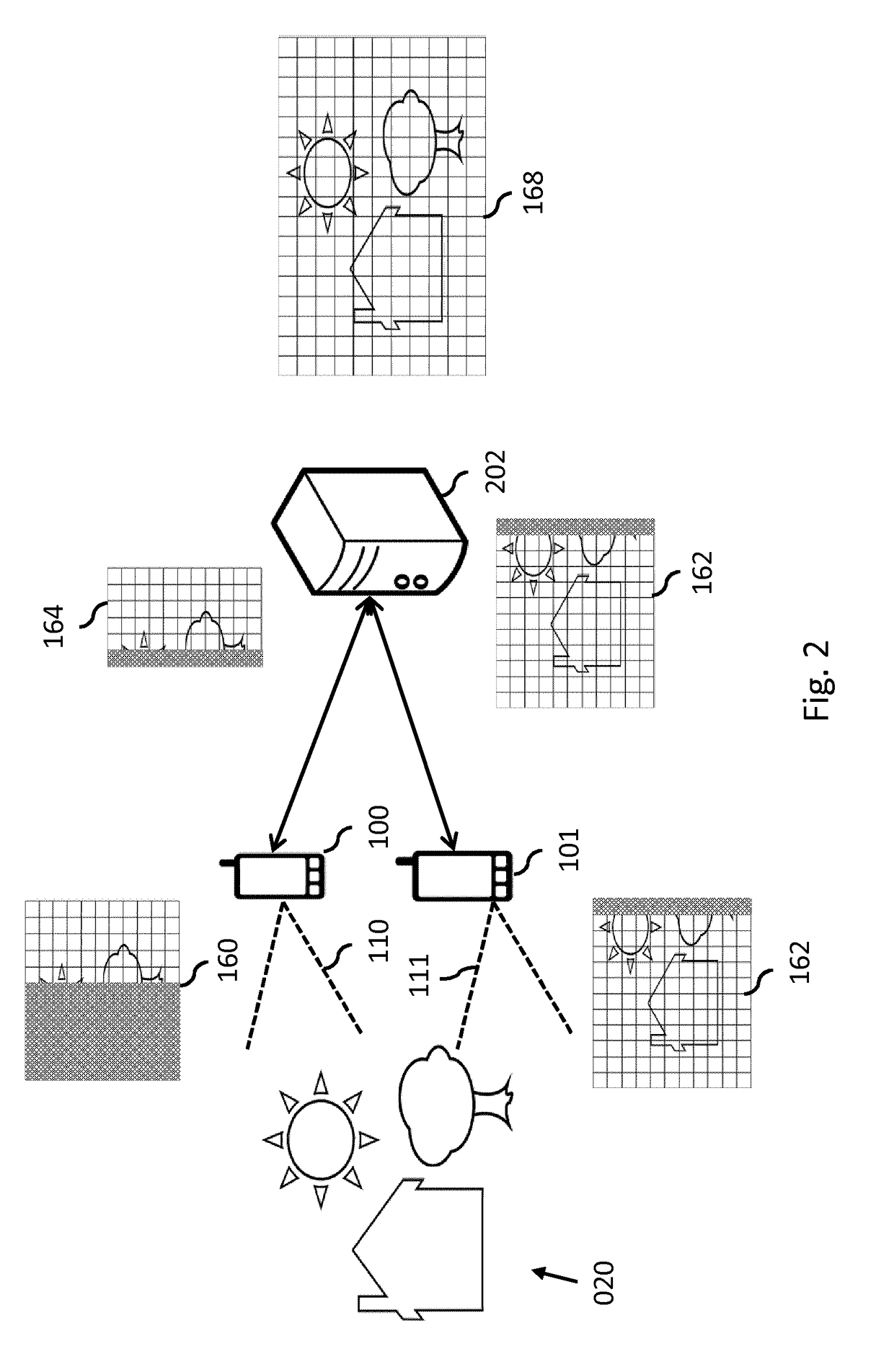Generating Output Video from Video Streams
a video stream and output technology, applied in the field of generating output video, can solve the problems of reducing or limiting the quality of output video, reducing or limiting the output video, and too much, too little, etc., to avoid or reduce unnecessary bandwidth usage.
- Summary
- Abstract
- Description
- Claims
- Application Information
AI Technical Summary
Benefits of technology
Problems solved by technology
Method used
Image
Examples
Embodiment Construction
[0082]FIG. 1 shows a scene 020 being recorded by a plurality of recording devices 100-102. The field of view 110-112 of the respective recording devices is schematically indicated by dashed lines, indicating that the view of the scene 020 obtained by each of the recording devices 100-102 differs. As a result, different recordings of the scene may be obtained. The recording devices 100-102 may also function as stream sources, in that they may make their recording available as a (real-time) video stream. In accordance with the invention as claimed, a system 200 may be provided for generating an output video from the plurality of video streams. In the example of FIG. 1, the system 200 is schematically shown as a server which is connected to the recording devices 100-102 via a network 040, e.g., the internet, an access network and / or a private network.
[0083]It is noted that in FIG. 1 and the following, the recording devices 100-102 are configured to function as stream sources, and there...
PUM
 Login to View More
Login to View More Abstract
Description
Claims
Application Information
 Login to View More
Login to View More - R&D
- Intellectual Property
- Life Sciences
- Materials
- Tech Scout
- Unparalleled Data Quality
- Higher Quality Content
- 60% Fewer Hallucinations
Browse by: Latest US Patents, China's latest patents, Technical Efficacy Thesaurus, Application Domain, Technology Topic, Popular Technical Reports.
© 2025 PatSnap. All rights reserved.Legal|Privacy policy|Modern Slavery Act Transparency Statement|Sitemap|About US| Contact US: help@patsnap.com



